DVD: Some More Auteurist & Non-Auteurist Shopping Tips
1. IL CINEMA RITROVATO DVD AWARDS 2012 IX edition
Jurors: Lorenzo Codelli, Alexander Horwath, Mark McElhatten, Paolo Mereghetti, Jonathan Rosenbaum
BEST DVD 2011/2012
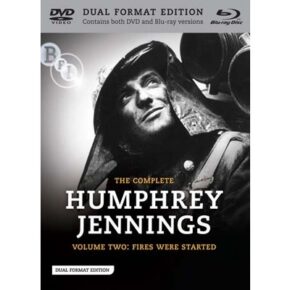 The Complete Humphrey Jennings (BFI). An ongoing series that has recently released the second of its three prefigured volumes. Jennings was the documentarian who witnessed British history with a deep and poetic gaze during the ’30s and the ’40s.
The Complete Humphrey Jennings (BFI). An ongoing series that has recently released the second of its three prefigured volumes. Jennings was the documentarian who witnessed British history with a deep and poetic gaze during the ’30s and the ’40s.
BEST BLU-RAY 2011/2012
A Hollis Frampton Odyssey (Criterion). Including early films from 1966 to 1969, films from Hapax Legomena, and selected films from the unfinished Magellan series.
BEST SPECIAL FEATURES (BONUS)
Godzilla (Criterion), for its historical contextualization.
Moses und Aron (New Yorker Video), especially for including the libretto in German and English.
The Devils (BFI), for documentation of the various controversies surrounding the film.
BEST REDISCOVERIES
Provoking Reality: Die “Oberhausener” (Editions Filmmuseum München), for a “famous” moment in film history—The Oberhausen Manifesto of 1962—a presentation of 19 forgotten shorts made by artists who signed this manifesto.
Landscape of Postwar Period (Korean Film Archive), for four Korean features (The Widow, The Flower in Hell, The Money, A Drifting Story) by four major directors during a very troubled era—an era that is analyzed in the accompanying booklet.
BEST DVD SERIES/BEST BOX SET
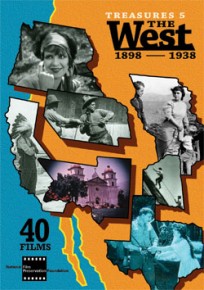 Treasures 5: The West 1898-1938 (National Film Preservation Foundation), for its exceptional creative scholarship in presenting and annotating many neglected films by or with Bronco Billy Anderson, Clara Bow, Victor Fleming, D.W. Griffith, Thomas Ince, Gregory La Cava, Tom Mix, and Mack Sennett, among others.
Treasures 5: The West 1898-1938 (National Film Preservation Foundation), for its exceptional creative scholarship in presenting and annotating many neglected films by or with Bronco Billy Anderson, Clara Bow, Victor Fleming, D.W. Griffith, Thomas Ince, Gregory La Cava, Tom Mix, and Mack Sennett, among others.
World Cinema Foundation Box Set (Carlotta Films), for resurrecting major works from neglected national cinemas: The Wave from Mexico, Touki Bouki from Senegal, Trances from Morocco, and The Red Flute from Kazakhstan.
Because the jurors would like to stress that none of us is in a position to know all the important DVD releases, even though all of us have encountered important examples, some of which were not nominated for awards but deserve in any case to be far better known, each of us has selected a personal favourite that he would like to recommend:
Lorenzo Codelli would like to call attention to Renown Pictures, a British company which releases extremely rare British movies: renownpicturesltd.com.
Alexander Horwath has selected The Complete Jean Vigo on Criterion, for its brilliant, multifaceted reconstruction of a great filmmaker’s cosmos via essays, commentaries, documentaries, conversations, alternate edits, and, of course, beautiful transfers of the films themselves.
Mark McElhatten cites Mysteries of Lisbon (Music Box Films Home Entertainment), the late Raúl Ruiz’s labyrinthine adaption of a 19th-century novel shot digitally, available here in its 257-minute theatrical version in a stunning Blu-ray rendition.
Paolo Mereghetti has selected William Dieterle’s Vulcano (Ripley’s Home Video), which finally offers the possibility to see in a superb restoration the film with Anna Magnani that was made specifically “against” the Stromboli of Roberto Rossellini.
Jonathan Rosenbaum has picked The Big Trail (20th Century-Fox), a two-disc Blu-ray and DVD set devoted to Raoul Walsh’s 1930 masterpiece, captured in much of its original splendour and chronicled in considerable detail.
2. I don’t ordinarily mention players in this column, but should nevertheless point out that the Oppo BDP-93 all-region modified Blu-ray and DVD player, which I’ve recently purchased from Bombay Electronics for $615, has so far played every disc of whatever zone or region that I’ve inserted. Furthermore, for those like me who are often defeated by the obscurity of user manuals, this one provides a user-friendly model of clarity and lucidity.
3. I’m probably not the first one to point this out, but even though the fine 1958 British docudrama A Night to Remember, recently seen on a Criterion Blu-ray, is anything but an auteurist touchstone, its journeyman director Roy Ward Baker, mainly known for his TV work, also directed the exceptional Hollywood noir thriller Don’t Bother to Knock (1952) with Marilyn Monroe and Richard Widmark, a Manny Farber favourite with which it shares an interesting and uncommon virtue: a capacity to convey the illusion of real time passing over a few hours in a confined space.
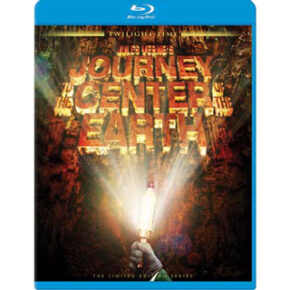 4. Although I had dim memories of liking this when I last saw it in my teens (and of even reading and enjoying the Jules Verne novel it was based on a little earlier), I got a second chance to see Journey to the Center of the Earth (1959) only because the thoughtful folks at Twilight Time sent me a copy. Since I made a point of dissing one of their other releases of a ’50s Fox CinemaScope picture in my previous column, Desiree, largely because of its cloddish direction by Henry Koster, I should confess that the name of the director assigned to this romp, Henry Levin, didn’t exactly ring any bells either. A brisk look at IMDb suggests that he tended to specialize in Clifton Webb and Pat Boone vehicles, hardly something to get worked up about. But Journey to the Center of the Earth—a fantasy-adventure that features Boone (mainly as comic relief) along with James Mason and Arlene Dahl, and manages to be thoroughly ridiculous and completely enjoyable at the same time without ever deserving to be treated derisively as camp—is a delightful surprise. Scripted by Walter Reisch and Charles Brackett and scored by none other than Bernard Herrmann, it captures the special page-turning gift of Verne with gaudy and colourful sets, giant lizards, and a capacity it shares with its motley crew of characters to keep things going long after hope vanishes. In short, this is a recommendation.
4. Although I had dim memories of liking this when I last saw it in my teens (and of even reading and enjoying the Jules Verne novel it was based on a little earlier), I got a second chance to see Journey to the Center of the Earth (1959) only because the thoughtful folks at Twilight Time sent me a copy. Since I made a point of dissing one of their other releases of a ’50s Fox CinemaScope picture in my previous column, Desiree, largely because of its cloddish direction by Henry Koster, I should confess that the name of the director assigned to this romp, Henry Levin, didn’t exactly ring any bells either. A brisk look at IMDb suggests that he tended to specialize in Clifton Webb and Pat Boone vehicles, hardly something to get worked up about. But Journey to the Center of the Earth—a fantasy-adventure that features Boone (mainly as comic relief) along with James Mason and Arlene Dahl, and manages to be thoroughly ridiculous and completely enjoyable at the same time without ever deserving to be treated derisively as camp—is a delightful surprise. Scripted by Walter Reisch and Charles Brackett and scored by none other than Bernard Herrmann, it captures the special page-turning gift of Verne with gaudy and colourful sets, giant lizards, and a capacity it shares with its motley crew of characters to keep things going long after hope vanishes. In short, this is a recommendation.
5. Again according to IMDb, David Mackenzie has made seven features by now; I’ve seen the second (Young Adam, 2003), the third (Asylum, 2005), and now, thanks to a Blu-ray from IFC Films, the sixth, Perfect Sense (2011). All three of these are highly aggressive provocations whose erotic and intellectual strengths tend to run neck-and-neck. Mackenzie doesn’t take a script credit on Perfect Sense (which was written by a Dane, Kim Fupz Aakeson), an allegorical piece of SF (although, curiously, it hasn’t generally been described as such, either in ads or in the reviews I’ve read) about an epidemic causing people to lose their senses one by one—which eventually leads this film to go completely silent for a stretch, resulting in creepy moods that are a universe apart from The Artist. I can’t say that this entirely won me over—Young Adam remains for me the best of the three I’ve seen—but I’d see any other David Mackenzie film to come my way in a flash.
6. Assault on a Queen (1966), from Olive Films. There are many potential auteurs here, in a heist caper about an attempt to rob the H.M.S. Queen Elizabeth with the aid of a refurbished WWII U-boat—Frank Sinatra (star), Duke Ellington (score), Jack Finney (source novel), Rod Serling (screenplay), William H. Daniels (the cinematographer of Foolish Wives and Greed, doubling here as cinematographer and associate producer), and Verna Lisi (costar and period décor)—not to mention, last and perhaps least, TV veteran Jack Donohue (director). There’s also the novelty of a Paramount picture shot in Panavision. Yet the results of all this are uniquely tedious, and I can’t believe this is only Donohue’s fault. In trying to figure out who or what to blame, I arrive at the following hypothesis: Finney’s first novel was 5 Against the House, about an ingenious plot to rob Harold’s Club in Reno, and his third was The House of Numbers, about an ingenious plot to escape from San Quentin; both yielded unusually effective ’50s Hollywood thrillers (along with his second novel, which became Invasion of the Body Snatchers), so reaching for a supposedly ingenious plot to rob the Queen Elizabeth in his fourth novel, which started out as a Saturday Evening Post serial, must have seemed irresistible.
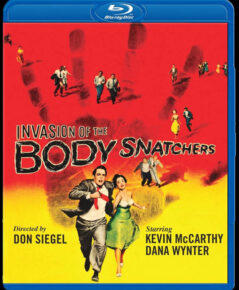 Coincidentally, soon after writing the above, I receive another Olive Films release, a Blu-ray of the original 1955 Invasion of the Body Snatchers in letterboxed SuperScope (2:00:1)—adapted from the Finney novel by Daniel Mainwaring, whose previous realized screenplay, for The Phenix City Story (1955), is similarly scary and paranoid. At first I’m put off here by what appears to be director Don Siegel’s compulsive centre framing, which I recall Siegel fan Manny Farber used to regard as something of a aesthetic deal-breaker (causing Farber, for instance, to dismiss Sternberg’s The Saga of Anatahan when I once showed it to him for precisely that reason). But then, about 20 minutes into this scare show, at the same time that the first pod-turned-human appears on a billiards table, the compositions start to become less centred, making it appear that Siegel might have been using this visual dullness, along with the studied blandness of Kevin McCarthy’s lead performance, to create a false sense of security.
Coincidentally, soon after writing the above, I receive another Olive Films release, a Blu-ray of the original 1955 Invasion of the Body Snatchers in letterboxed SuperScope (2:00:1)—adapted from the Finney novel by Daniel Mainwaring, whose previous realized screenplay, for The Phenix City Story (1955), is similarly scary and paranoid. At first I’m put off here by what appears to be director Don Siegel’s compulsive centre framing, which I recall Siegel fan Manny Farber used to regard as something of a aesthetic deal-breaker (causing Farber, for instance, to dismiss Sternberg’s The Saga of Anatahan when I once showed it to him for precisely that reason). But then, about 20 minutes into this scare show, at the same time that the first pod-turned-human appears on a billiards table, the compositions start to become less centred, making it appear that Siegel might have been using this visual dullness, along with the studied blandness of Kevin McCarthy’s lead performance, to create a false sense of security.
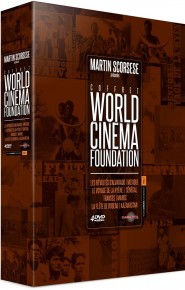 7. Coffret World Cinema Foundation (Carlotta, region 2, 4 discs + 32-page booklet, French only). I guess it’s only a matter of time before some version of this becomes available in English, but if you don’t want to wait, this includes on its four discs, along with diverse extras, new restorations of Emilio Gómez Muriel and Fred Zinnemann’s The Wave (1936, and known in French as Les révoltés d’Alverado), Djibril Diop Mambety’s Touki Bouki (1973, known in French as Le voyage de la Hyène), Ahmad El Maanouni’s Transes (1981), and Yermek Shinarbayev’s The Red Flute (1989, known in French as La flûte de Roseau). As nearly as I can recall, I’ve seen only the middle two of these items, both of which I like a lot. My 1991 capsule review of Touki Bouki for the Chicago Reader: “This 1973 first feature…is one of the greatest of all African films and almost certainly the most experimental. Beautifully shot and strikingly conceived, it follows the comic misadventures of a young motorcyclist and former herdsman (Magaye Niang) who gets involved in petty crimes in Dakar during an attempt to escape to Paris with the woman he loves (Mareme Niang). The title translates as Hyena’s Voyage, and among the things that make this film so interesting stylistically are the fantasy sequences involving the couple’s projected images of themselves in Paris and elsewhere.”
7. Coffret World Cinema Foundation (Carlotta, region 2, 4 discs + 32-page booklet, French only). I guess it’s only a matter of time before some version of this becomes available in English, but if you don’t want to wait, this includes on its four discs, along with diverse extras, new restorations of Emilio Gómez Muriel and Fred Zinnemann’s The Wave (1936, and known in French as Les révoltés d’Alverado), Djibril Diop Mambety’s Touki Bouki (1973, known in French as Le voyage de la Hyène), Ahmad El Maanouni’s Transes (1981), and Yermek Shinarbayev’s The Red Flute (1989, known in French as La flûte de Roseau). As nearly as I can recall, I’ve seen only the middle two of these items, both of which I like a lot. My 1991 capsule review of Touki Bouki for the Chicago Reader: “This 1973 first feature…is one of the greatest of all African films and almost certainly the most experimental. Beautifully shot and strikingly conceived, it follows the comic misadventures of a young motorcyclist and former herdsman (Magaye Niang) who gets involved in petty crimes in Dakar during an attempt to escape to Paris with the woman he loves (Mareme Niang). The title translates as Hyena’s Voyage, and among the things that make this film so interesting stylistically are the fantasy sequences involving the couple’s projected images of themselves in Paris and elsewhere.”
And here’s my review of Transes for the Soho News a decade earlier, when it played at the New York Film Festival: “October 1: The best new movie I see all week is a particular favorite, I’ve been told, of Susan Sontag’s. I share much of her enthusiasm for the French/Moroccan coproduction Transes, directed by Ahmed El Maanouni, if only because this movie has some of the best sound-mixing and most infectious music I’ve heard in ages. Both of these are central aspects of its subject, the North African tour of an indigenous pop group called Nasa El Ghiwane, which comes from the Casablanca ghetto and sings about extreme poverty—a genuinely subversive male quintet whose popularity has spread like wildfire since the ’60s. Originally banned from Moroccan radio and TV, they can automatically command an audience of 20,000 wherever they play in Algeria, Morocco, or Tunisia.
“The movie starts wonderfully by establishing direct continuities between the music and the Casablanca ghetto (the latter traversed from a car window)—a sequence that was almost cut by the local government until the powerful Nasa El Ghiwane group intervened; and the transitions throughout between both physical and aural subjects are handled with a remarkable ear and eye. Some of the instrumental music is rather Coltrane-like—there’s a plucked stringed-instrument solo that’s almost as sexy as Jimmy Garrison’s bass on Coltrane’s Crescent album—while the spoken or sung lyrics range from the incantatory (‘Oh, Arab brother!’ say the subtitles) to the poetic (‘At the marriage of tea and amber, you invite absinthe and mint; my glass alone is sad’) to the analytical/political (‘We bury what unites us—language and rhythm, and a plethora of beliefs. Is not man a reflection of man?’ ‘The twentieth century—and one still feeds, like flies, on carrion.’)
“Interspersed are raps and rehearsals with the group, newsreel footage of the funeral of the father of the present Moroccan king in 1960, and the earliest surviving film footage shot in Morocco, circa 1918-1920, which (naturally) features French Legionnaires cavorting with bare-breasted prostitutes. The movie’s overall form recalls Don’t Look Back, Leacock-Pennebaker’s record of a Bob Dylan tour, but the music in question is even more participatory—hence (one could argue) more political. Trying to scribble my notes in the dark, I have to forcibly resist turning my pen into an improvising drumstick. Even when this movie makes my mind wander, it leads me into interesting places. If it ever opens in a quiet burg like Gotham, I could return to it with pleasure.”
8. My favourite extra on Criterion’s two-disc edition of Being John Malkovich is a recent interview with Malkovich himself, speaking quite plausibly to humourist John Hodgman about (a) the story of him being presented with Charlie Kaufman’s singular script (with the same title) and how he related to it, (b) the movie’s philosophical implications, especially in relation to the time when it was made (1999), and (c) how little any of the above has to do with being John Malkovich, at least in any literal sense.
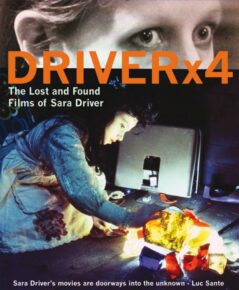 9. Conflict of interest be damned: I did a videotaped interview with Sara Driver about her 1993 feature When Pigs Fly several years ago and wrote a short piece about her films last year, both on which have surfaced as extras on filmswelike.com’s Driver x 4: The Lost and Found Films of Sara Driver, a two-disc set that can be purchased for just under $25 on Amazon the last time I looked. It seems worth adding that this long-awaited and long-overdue package is very elegantly designed as well as affordably priced…And as long as I’m being improper, I guess I should mention Cinema Guild’s deluxe editions of The Turin Horse (2011) on both DVD and Blu-ray, both of which include, along with much else, my only solo audio commentary to date—something I’ve avoided doing in the past because of my resistance to the entire notion of single (and therefore non-dialectical) “experts.”
9. Conflict of interest be damned: I did a videotaped interview with Sara Driver about her 1993 feature When Pigs Fly several years ago and wrote a short piece about her films last year, both on which have surfaced as extras on filmswelike.com’s Driver x 4: The Lost and Found Films of Sara Driver, a two-disc set that can be purchased for just under $25 on Amazon the last time I looked. It seems worth adding that this long-awaited and long-overdue package is very elegantly designed as well as affordably priced…And as long as I’m being improper, I guess I should mention Cinema Guild’s deluxe editions of The Turin Horse (2011) on both DVD and Blu-ray, both of which include, along with much else, my only solo audio commentary to date—something I’ve avoided doing in the past because of my resistance to the entire notion of single (and therefore non-dialectical) “experts.”
10. Rightly or wrongly, I associate most filmed interviews with Alfred Hitchcock as manneristic put-ons of one sort or another, so I’m especially grateful for the 40 minutes of footage showing him interviewed by Mike Scott in 1966 for British TV that’s included with Criterion’s The 39 Steps (1939), in which he’s unfailingly straightforward, intelligent, and disarmingly sincere (especially when he owns up to his enduring fear of cops). Almost all of what he says here is familiar, but the inflections make it priceless.
 11. When I met Bernard Eisenschitz in Paris last January, he was about to start work on a short book about Anthony Mann’s Devil’s Doorway (1950) for Wild Side Video’s Classics Confidential (whose DVD-and-book devoted to Wind Across the Everglades I covered in my previous column). When I saw him again in Bologna five months later, he presented me with a finished copy of La porte du diable with his 80-page La terre promise, which impressively combines criticism and film history, illustrated in part with some fascinating period promotional materials (a comic-strip ad for Quaker Puffed Rice headlined, “Robert Taylor Okays a Gun That Shoots Rice!”). The film itself is a knockout—arguably the last of Mann’s noirs, at least visually (with stunning John Alton cinematography), and his first Western (and perhaps the one in black and white that best exposes his gifts as a landscape artist)—unjustly trumped the same year by Delmer Daves’ similarly Indian-friendly (but, as persuasively argued by Jeanine Basinger’s book on Mann, politically and artistically inferior) Broken Arrow. Most unexpected of all, given Jacques Tourneur’s famous refusal to direct this MGM film due to his dislike of the script (which Eisenschitz plausibly maintains must have been a much earlier draft), is how radically progressive the film is about both Native Americans and women, at a time when Hollywood was supposedly at its most ideologically conservative. (The only credited screenwriter is the mainly unheralded Guy Trosper.) Mann’s tragic perspective and pessimism may complicate the liberal sentiments, but part of the value of Eisenschitz’s criticism is to show how nuanced all the characters are—how, for instance, the tubercular cough of the racist lawyer villain (Louis Calhern) tends to humanize him. (Bertrand Tavernier, interviewed on the disc, is also apt and eloquent about Calhern’s performance.) “In Mann, as in Renoir, everyone has his reasons, even the bastards,” he writes (in my translation), leading to a description of the Indian hero Lance’s killing of this villain in a pun as “le crime de monsieur Lance.” In short, Devil’s Doorway is politically astute but far from politically correct, and since I ardently defend John Cassavetes casting Lelia Goldini as Hugh Hurd’s sister in Shadows (1959), I can’t object too strenuously to the casting of Robert Taylor and others in Indian parts—especially Fritz Leiber in his very moving final screen performance as Taylor’s father.
11. When I met Bernard Eisenschitz in Paris last January, he was about to start work on a short book about Anthony Mann’s Devil’s Doorway (1950) for Wild Side Video’s Classics Confidential (whose DVD-and-book devoted to Wind Across the Everglades I covered in my previous column). When I saw him again in Bologna five months later, he presented me with a finished copy of La porte du diable with his 80-page La terre promise, which impressively combines criticism and film history, illustrated in part with some fascinating period promotional materials (a comic-strip ad for Quaker Puffed Rice headlined, “Robert Taylor Okays a Gun That Shoots Rice!”). The film itself is a knockout—arguably the last of Mann’s noirs, at least visually (with stunning John Alton cinematography), and his first Western (and perhaps the one in black and white that best exposes his gifts as a landscape artist)—unjustly trumped the same year by Delmer Daves’ similarly Indian-friendly (but, as persuasively argued by Jeanine Basinger’s book on Mann, politically and artistically inferior) Broken Arrow. Most unexpected of all, given Jacques Tourneur’s famous refusal to direct this MGM film due to his dislike of the script (which Eisenschitz plausibly maintains must have been a much earlier draft), is how radically progressive the film is about both Native Americans and women, at a time when Hollywood was supposedly at its most ideologically conservative. (The only credited screenwriter is the mainly unheralded Guy Trosper.) Mann’s tragic perspective and pessimism may complicate the liberal sentiments, but part of the value of Eisenschitz’s criticism is to show how nuanced all the characters are—how, for instance, the tubercular cough of the racist lawyer villain (Louis Calhern) tends to humanize him. (Bertrand Tavernier, interviewed on the disc, is also apt and eloquent about Calhern’s performance.) “In Mann, as in Renoir, everyone has his reasons, even the bastards,” he writes (in my translation), leading to a description of the Indian hero Lance’s killing of this villain in a pun as “le crime de monsieur Lance.” In short, Devil’s Doorway is politically astute but far from politically correct, and since I ardently defend John Cassavetes casting Lelia Goldini as Hugh Hurd’s sister in Shadows (1959), I can’t object too strenuously to the casting of Robert Taylor and others in Indian parts—especially Fritz Leiber in his very moving final screen performance as Taylor’s father.
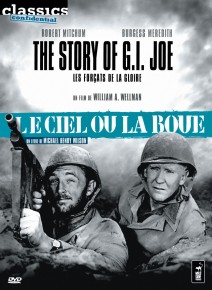 12. Another recent Classics Confidential combo: The Story of G.I. Joe (1945) and The Battle of San Pietro (1945) with Michael Henry Wilson’s Le ciel ou la boue. And some other releases that seem to do full justice to their films’ visual pleasures are the Blu-rays of Body and Soul (1947), Force of Evil (1948), Johnny Guitar (1954), and My Son John (1952), and the DVD of Rafi Pitts’ The Hunter (2010), all from Olive Films. My only (minor) complaint about the very enterprising Olive people (whose office, I’ve just discovered from Patrick Z. McGavin in Time Out Chicago, is in a remote Chicago suburb) is that they could use a literate copy editor—or maybe just a simple proofreader—on a few of their releases, to spare us such phrases on their flaps as “Martin Scorsese Introduction of [sic] Johnny Guitar” and “on [sic] of the most original westerns of all time.” Regarding The Hunter—the least known item in this bunch (which I wrote about in detail in Cinema Scope 46), and my favourite Iranian film in recent years—I hasten to add that if you have a multi-regional player, the Artificial Eye edition is less expensive, even with international postage from Amazon UK, and has the additional benefit of including an extended and very informative interview with the writer-director-star.
12. Another recent Classics Confidential combo: The Story of G.I. Joe (1945) and The Battle of San Pietro (1945) with Michael Henry Wilson’s Le ciel ou la boue. And some other releases that seem to do full justice to their films’ visual pleasures are the Blu-rays of Body and Soul (1947), Force of Evil (1948), Johnny Guitar (1954), and My Son John (1952), and the DVD of Rafi Pitts’ The Hunter (2010), all from Olive Films. My only (minor) complaint about the very enterprising Olive people (whose office, I’ve just discovered from Patrick Z. McGavin in Time Out Chicago, is in a remote Chicago suburb) is that they could use a literate copy editor—or maybe just a simple proofreader—on a few of their releases, to spare us such phrases on their flaps as “Martin Scorsese Introduction of [sic] Johnny Guitar” and “on [sic] of the most original westerns of all time.” Regarding The Hunter—the least known item in this bunch (which I wrote about in detail in Cinema Scope 46), and my favourite Iranian film in recent years—I hasten to add that if you have a multi-regional player, the Artificial Eye edition is less expensive, even with international postage from Amazon UK, and has the additional benefit of including an extended and very informative interview with the writer-director-star.
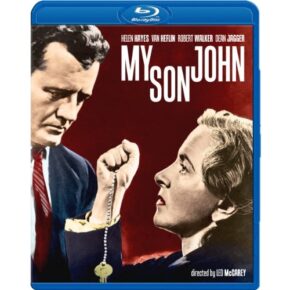 But I’m ready to forgive the Olive people for anything now that they’ve actually brought out Leo McCarey’s irreplaceable My Son John, a studio film that I was afraid no one would ever release in digital form. Is it possible to postulate a great film being made about the inside of Michele Bachmann’s brain? I don’t know the answer to that, and there’s no question that Robert Walker’s death in mid-production makes this a deeply flawed film on some level, and even a very bad one in some of its later stretches. But it isn’t a bad film that can be read on any level as camp, despite all the hysteria about Communist spies and “family values” leaking out of every pore—a fact that may be connected to what makes it literally indigestible to some of my more postmodernist colleagues. For me, it has more truthful things to say about American insanity than any other Hollywood feature of the early ’50s, even Johnny Guitar (admittedly a close runner-up, and certainly a better movie in most respects, even if it can be read by many as camp), and the performances by Walker, Helen Hayes, and Dean Jagger continue to pulverize me.
But I’m ready to forgive the Olive people for anything now that they’ve actually brought out Leo McCarey’s irreplaceable My Son John, a studio film that I was afraid no one would ever release in digital form. Is it possible to postulate a great film being made about the inside of Michele Bachmann’s brain? I don’t know the answer to that, and there’s no question that Robert Walker’s death in mid-production makes this a deeply flawed film on some level, and even a very bad one in some of its later stretches. But it isn’t a bad film that can be read on any level as camp, despite all the hysteria about Communist spies and “family values” leaking out of every pore—a fact that may be connected to what makes it literally indigestible to some of my more postmodernist colleagues. For me, it has more truthful things to say about American insanity than any other Hollywood feature of the early ’50s, even Johnny Guitar (admittedly a close runner-up, and certainly a better movie in most respects, even if it can be read by many as camp), and the performances by Walker, Helen Hayes, and Dean Jagger continue to pulverize me.
A last-minute flash: forthcoming from Olive are a remastered The Quiet Man (1952) and, even more important (to me, anyway), The Sun Shines Bright (1953). Olive has just recently brought out Rio Grande (1950), so it seems the only John Ford Republic release left is This Is Korea! (1951)—which is already available on Amazon, or was the last time I checked.
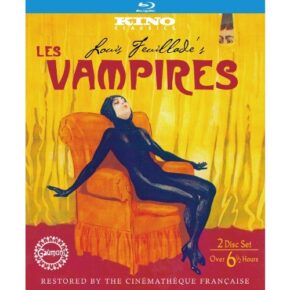 13. Another item in the at-long-last department: a Blu-ray edition of Louis Feuillade’s monumental ten-chapter serial Les vampires (1915-1916) on two discs from Kino Classics, drawn from the Cinémathèque Française’s lovely and tinted restoration of 16 years ago. The only thing about this that gives me any pause is the decision to render all the intertitles exclusively in English, without the option of English subtitles for the original French titles.
13. Another item in the at-long-last department: a Blu-ray edition of Louis Feuillade’s monumental ten-chapter serial Les vampires (1915-1916) on two discs from Kino Classics, drawn from the Cinémathèque Française’s lovely and tinted restoration of 16 years ago. The only thing about this that gives me any pause is the decision to render all the intertitles exclusively in English, without the option of English subtitles for the original French titles.
14. I’m grateful to Kenneth Lonergan for clarifying in interviews that the 150-minute Margaret, which I saw in December 2011 and the 186-minute cut, which I saw in July, are both “director’s cuts,” and now that Fox has released both in one Blu-ray/DVD package, it’s hard to say which version I prefer. Both are brilliant messes and finely distilled renderings of the New York Jewish upper-middle-class zeitgeist circa 2003, regardless of whether one regards Anna Paquin’s teenage heroine as someone to identify with (apparently the writer-director’s position), or as monstrous, or as both (my position). Being able to accommodate all three attitudes, with just as much ambivalence about most of the other major characters, has a lot to do with what keeps this film so vital and worrying. (Jeannie Berlin is a particular standout, but this movie also contains the only Jean Reno performance I’ve seen so far that I find likeable.)
15. The most out-of-the-way and user-unfriendly but important releases tend to be Ruscico’s Hyperkino sets devoted to classic early Russian cinema; if you doubt my word, try navigating Ruscico’s web site (ruscico.com) in English, where they also have the brass to charge 40 Euros for their two-disc edition of Boris Barnet’s 1933 masterpiece Outskirts, with notes and commentary by Bernard Eisenschitz. But if you go to moviemail.com/scripts/collection.pl?collID=670 in the UK, you can order the same thing for 19,99 quid, which by my count is substantially less.
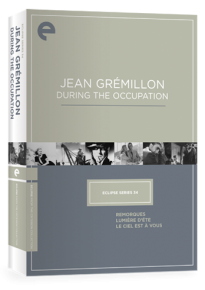 16. While breathlessly awaiting the Criterion Blu-ray of Paul Fejos’ sublime Lonesome (1928)—which will include among its many extras Fejos’ The Last Performance and Broadway (the latter in its reconstructed sound version), both from 1929, and will hopefully arrive in my mailbox before this reaches print, even though this will be long after my deadline—I already have the Eclipse box set Jean Grémillon During the Occupation, devoted to the most neglected of all the major French filmmakers, in France as well as everywhere else. Remorques (1941), the first of the three features gathered here, has already been available in Canada, France, and the US, but astonishingly, the latter two, which I like even more, Lumière d’été (1943) and Le ciel est à vous (1944), have apparently been commercially unavailable everywhere until now. I programmed the first of these, beautifully scripted by Jacques Prévert, in a “Buried Treasures” program at the Toronto Festival of Festivals back in 1981, and the second may qualify as the most inspirational of all the French films made under the Occupation, with the possible exception of Les enfants du paradis. Thank you, Criterion!
16. While breathlessly awaiting the Criterion Blu-ray of Paul Fejos’ sublime Lonesome (1928)—which will include among its many extras Fejos’ The Last Performance and Broadway (the latter in its reconstructed sound version), both from 1929, and will hopefully arrive in my mailbox before this reaches print, even though this will be long after my deadline—I already have the Eclipse box set Jean Grémillon During the Occupation, devoted to the most neglected of all the major French filmmakers, in France as well as everywhere else. Remorques (1941), the first of the three features gathered here, has already been available in Canada, France, and the US, but astonishingly, the latter two, which I like even more, Lumière d’été (1943) and Le ciel est à vous (1944), have apparently been commercially unavailable everywhere until now. I programmed the first of these, beautifully scripted by Jacques Prévert, in a “Buried Treasures” program at the Toronto Festival of Festivals back in 1981, and the second may qualify as the most inspirational of all the French films made under the Occupation, with the possible exception of Les enfants du paradis. Thank you, Criterion!
- « Previous
- 1
- 2


